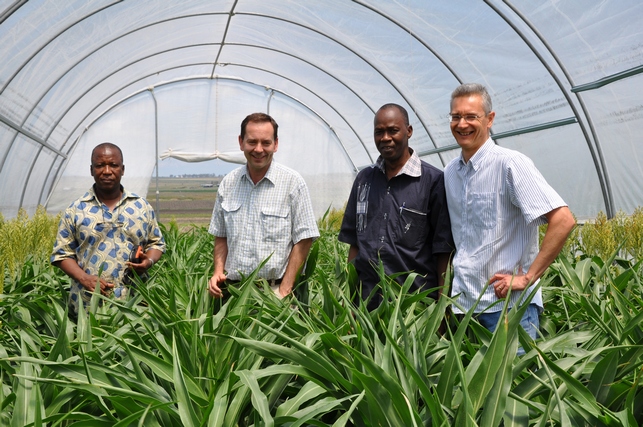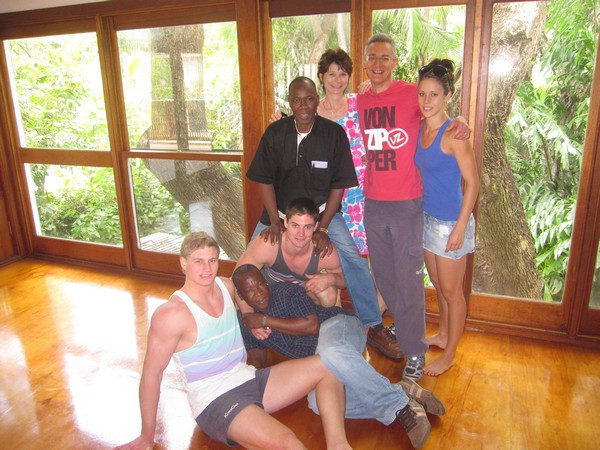In ancient Europe, Timbuktu, in Northern Mali, gained fame as a fabled city of knowledge and learning at a far end of the world – snuggled in the Sahara Desert, and almost impossible to get to. And so, then as in our times, the phrase ‘As far as Timbuktu’ came to mean a place that is unimaginably far away, is completely foreign, or is unreachable – at the other end of the earth. Sitting on the left bank of the River Niger on the southern edge of the Sahara, it was not only a seat of learning in the ancient world, but also an important trade and travel stop for merchants as they sought refuge from the desert.
Timbuktu ticks on today. And if you strike out south and travel 450km from Timbuktu, you would come to the village of Yendouma-Sogol. This is where Niaba Témé, a plant breeder at Mali’s L’Institut d’économie rurale (IER), was born and grew up on the family farm, and where his saga with sorghum began.
“We grew dryland crops like millet, sorghum, cowpeas, groundnuts, Bambara nuts, sesame and dah,” says Niaba. “I used to love harvesting the millet and helping my mother with her groundnut crops.”
Niaba describes the geography and climate of the region as being very harsh. Sandstone cliffs soar from the dusty sun-scorched lower plains where temperatures are only slightly lower than the plateaus, which bake in the intense heat – the daily temperature rarely falls below 30oC. As there is no major river, every single drop of the 500 millimetres of rainfall received each wet season is used for drinking, cropping and livestock husbandry.
“The rains during July and August make farming possible for our people,” says Niaba.“If we did not receive those rains, our crops would suffer and in some years, we were not able to harvest anything.”
Niaba says these crop failures contributed in part to his choosing a career where he could help farmers, like his parents and siblings, protect themselves from the risks of drought and extreme temperatures.
With molecular markers, you can easily see if the plant you’ve bred has the gene related to drought tolerance without having to grow the plant and or risk missing the trait through visual inspection.”
Breeding more sorghum with less water
For the past four years, Niaba and his team at IER have been collaborating with Jean-François Rami and his team at France’s Centre de coopération internationale en recherche agronomique pour le développement (CIRAD), with support from Syngenta complemented by other GCP funding on a project to improve sorghum grain yield and quality for West African farmers.
Sorghum is an important staple crop for Mali. It is used to make to (a thick porridge), couscous, as well as malted and local beer beverages. “Anytime I talk with farmers, they are always asking for higher-yielding lines and lines that can produce sustainable yields during drought, or do so with less water,” says Niaba. “Since 2008, with the help of CIRAD and Syngenta, we have been learning how to use molecular markers to identify parental lines which are more tolerant and better adapted to the arable and volatile environment of Mali and surrounding areas which receive between 600 and 800 millimetres of rainfall per year. Using molecular markers is new and exciting for us as it will speed up the breeding process. With molecular markers, you can easily see if the plant you’ve bred has the gene related to drought tolerance without having to grow the plant and or risk missing the trait through visual inspection.”
In 2010, Niaba obtained GCP funding to carry out similar research with CIRAD and collaborators at the International Crops Research Institute for the Semi-Arid Tropics (ICRISAT) in Africa. “In this project, we are trying to enhance sorghum grain yield and quality for the Sudano-Sahelian zone of West Africa using the backcross nested association mapping [BCNAM] approach. This involves using an elite recurrent parent that is already adapted to local drought conditions, then crossing it with several different specific or donor parents to build up larger breeding populations. The benefit of this approach is it can lead to detecting elite varieties much faster.”
I spent eight months in Hyderabad. It was the first time I had to speak English every day… I spent almost 11 years at the University of Texas Tech, and enjoyed every moment… We have been collaborating with researchers… in Australia “
Traversing the world seeking knowledge
But to backtrack a bit and find out how Niaba got to where he is today, let’s return to the family farm where he grew up, and where his career inspiration was forged and fired.
With a family background in farming now coupled with a keen interest in science, young Niaba enrolled at L’Institut Polytechnique Rural de Formation et de Recherche Appliquée (IPR/IFRA) at Katiboutou, in Eastern Bamako, Mali to study agronomy. He then went to IER, where, after two years there, he was offered a scholarship to study plant breeding in India.
“I spent eight months in Hyderabad. It was the first time I had to speak English every day so I was enrolled for an intensive English course at the University of Ousmania, Hyderabad, India, for the first two months. I then went on to do six months intensive training in the ICRISAT labs, learning how to set up experiments and collect and analyse data.”
His zest for plant breeding research and knowledge still unquenched, Niaba sought yet another intensive training course, this time in USA. During his time there, he made an impression on local researchers and it wasn’t long before he returned to complete his Bachelor’s, Master’s and PhD in Agronomy at the University of Texas Tech, Texas. “I spent almost 11 years at the University of Texas Tech, and enjoyed every moment. I love the opportunities and freedom that USA offers.”
Despite this attraction, Niaba remained true to Timbuktu and Mali. He left Texas and returned to Mali in January 2007 , where he was rapidly recruited by IER to take charge of their new biotechnology lab at Le Centre Regional de Recherche Agromique (CRRA). Shortly after, he became involved with GCP, working on three projects, one of which would take this native from near (or as far away as?) Timbuktu to yet another far-away place at the opposite end of the world known as Down Under – Australia.
“We have been collaborating with researchers at the Department of Agriculture, Fisheries and Forestry in Queensland, and the University of Queensland, Australia, since 2009, to introduce the stay-green drought-resistant gene into our local sorghum varieties.” says Niaba.

Left to right: Niaba Témé (Mali), David Jordan (Australia), Sidi Coulibaly (Mali) and Andrew Borrell (Australia) visiting an experiment at Hermitage Research Facility in Queensland, Australia.
Sorghum staying-greener with less water
Stay-green is a post-flowering drought adaptation trait that has contributed significantly to sorghum yield stability in northeastern Australia and southern USA for the last two decades. The project has three objectives:
- To evaluate the stay-green drought resistance mechanism in plant architectures and genetic backgrounds appropriate to Mali
- To develop sorghum germplasm populations enriched for stay-green genes that also carry genes for adaptation to cropping environments in Mali.
- To improve capacity of Mali researchers by carrying out training activities for African sorghum researchers in drought physiology and selection for drought adaptation in sorghum.
“In 2012 a colleague and myself were invited to Australia to take this training by Andrew Borrell and David Jordan,” says Niaba. “We learnt about association mapping, population genetics and diversity, molecular breeding, crop modelling using climate forecasts and sorghum physiology, plus a lot more! It was intense but rewarding, more so the fact that we have developed these new drought-tolerant crops which will enhance food security for my country.”
Thus ends today’s chapter in Niaba’s saga with sorghum. We expect to hear more on the latest from Niaba at the GCP General Research Meeting (GRM) in October, so watch this space!
Meantime, see his slides from GRM 2013 below.
Links
- Sorghum Research Initiative – Blogposts | Home page | InfoCentre | Products | Slides
















